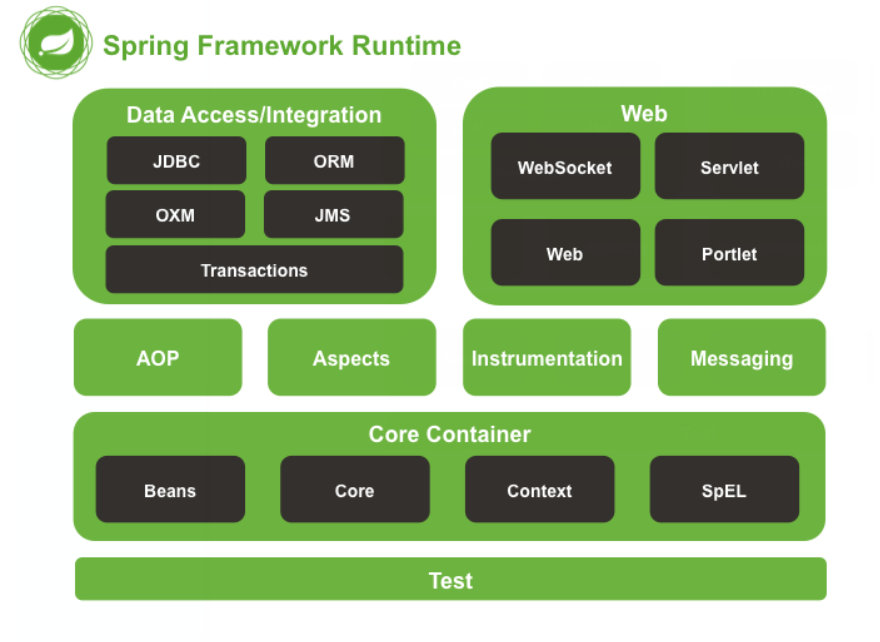一站式Java框架 核心 IoC(控制反转), AOP(面向切面编程) , 便于整合第三方框架
Spring特点
Spring的体系结构

Core Contraniner : IoC
IoC 基础上提供了AOP
Spring 是容器, 底层是工厂 我们通过Spring来创建对象
结合JDBC分析程序中出现的问题
- 新建一手Maven项目
- pom.xml 引入坐标
- 补全目录 java, resources
- 写jdbc的Demo
1
2
3
4
5
6
7
8
9
10
11
12
13
14
15
16
17
18
19
20
|
public static void (String[] args) throws Exception{
Class.forName("com.mysql.jdbc.Driver");
Connection conn = DriverManager.getConnection("jdbc:mysql://localhost:3306/eesy","root","1234");
PreparedStatement pstm = conn.prepareStatement("select * from account");
ResultSet rs = pstm.executeQuery();
while(rs.next()){
System.out.println(rs.getString("name"));
}
rs.close();
pstm.close();
conn.close();
}
|
- 发现一个问题 如果没有mysql的驱动 该程序就不能运行 这里就是 程序间的耦合
现在 解决类之间的依赖关系 , 降低类之间的依赖关系, 也就是 解耦
实际开发中做到 编译期不依赖, 运行时才依赖.
解耦的思路 :
- 使用反射来创建对象, 避免使用new
- 通过读取配置文件来获取创建对象的全限定类名
编写工厂类和配置文件完成解耦
Bean: 可重用组件 创建service和dao对象
JavaBean: Java编写的可重用组件
实体类: 通常与数据库有直接联系
- 搭建Java项目 标准三层架构
- 写
bean.properties 将 dao , service 以 key = value 形式 编写
- 编写
BeanFactory 读取 bean.properties
1
2
3
4
5
6
7
8
9
10
11
12
13
14
15
16
17
18
19
20
21
22
23
24
25
26
27
28
29
30
31
32
33
34
35
36
37
38
39
40
41
42
43
44
45
46
47
48
49
50
51
52
53
54
55
56
57
58
59
60
61
62
63
|
public class BeanFactory {
private static Properties props;
private static Map<String,Object> beans;
static {
try {
props = new Properties();
InputStream in = BeanFactory.class.getClassLoader().getResourceAsStream("bean.properties");
props.load(in);
beans = new HashMap<String,Object>();
Enumeration keys = props.keys();
while (keys.hasMoreElements()){
String key = keys.nextElement().toString();
String beanPath = props.getProperty(key);
Object value = Class.forName(beanPath).newInstance();
beans.put(key,value);
}
}catch(Exception e){
throw new ExceptionInInitializerError("初始化properties失败!");
}
}
public static Object getBean(String beanName){
return beans.get(beanName);
}
}
|





近期评论